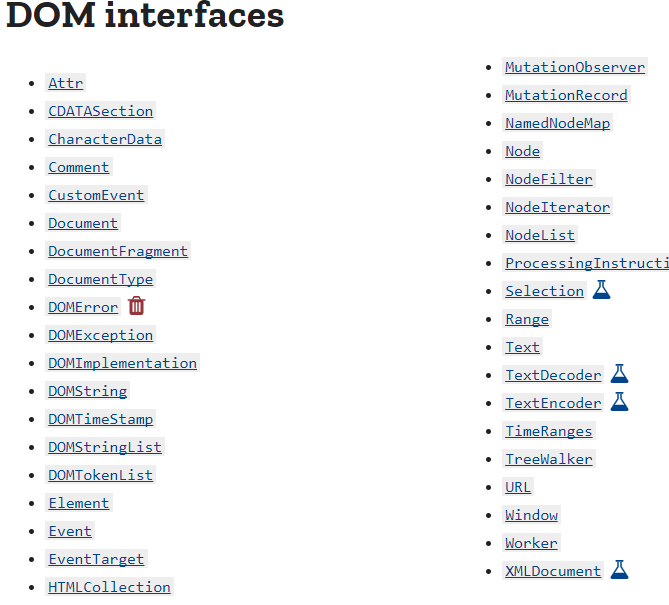NODE
在 HTML DOM (Document Object Model) 中 , 每一个元素都是 节点:
- 文档是一个文档节点。
- 所有的HTML元素都是元素节点。
- 所有 HTML 属性都是属性节点。
- 文本插入到 HTML 元素是文本节点。are text nodes。
- 注释是注释节点。
hasChildNodes()是否包含子节点
childNodes 返回包含指定节点的子节点的集合,该集合为即时更新的集合(live collection)。
DOM属性
- activeElement 属性返回文档中当前获得焦点的元素。
语法:document.activeElement
function myFunction() {var x = document.activeElement.tagName;document.getElementById("demo").innerHTML = x;}
DOM应用程序编程接口(常用方法(API)、属性等的整理)
查:
查找 HTML 元素,通过选择器获取元素,常用的就是通过ID、CLASS、tagname获取元素
document.getElementById("idname")document.getElementByClassName("classname")document.getElementByByTagName("p")
HTML5向Web API新引入了 document.querySelector()和document.querySelectorAll()两个方法,都可以接收三种类型的参数:id(#),class(,),标签,就像jquery选择器,参数需要是合法的CSS选择语法。
用起来更方便的从DOM中选取元素,功能类似于jquery的选择器,这样在写原生js代码的时候就方便了许多。
document.querySelector()
返回文档中匹配指定的选择器组的第一个元素(使用深度优先先序遍历文档的节点 | 并且通过文档标记中的第一个元素,并按照子节点数量的顺序迭代顺序节点)。
element = document.querySelector(selectors);
querySelectorAll
返回与指定的选择器组匹配的文档中的元素列表 (使用深度优先的先序遍历文档的节点)。返回的对象是
NodeList 。
document.querySelectorAll('ul')[0]
NodeList 对象是一个节点的集合,是由 Node.childNodes 和 document.querySelectorAll 返回的.
根据HTML字符串解析为dom上下文节点
const setLevels = (str: string) => {let frag: any = document.createRange().createContextualFragment(str)setDocsLevels(frag.querySelector('h1'), frag.querySelectorAll('h2'))}


